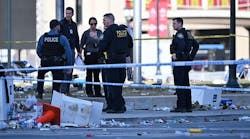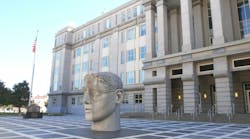We just completed a sad few days for campus violence. Three shootings left four dead and five wounded victims in Huntsville, Ala. and Knoxville, Tenn. But two of the incidents were unusual in that the alleged shooters were faculty members.
In what has sadly become an all too familiar situation a student at a suburban Huntsville middle school carried a gun on campus and shot and killed a classmate over what appears to be a gang-related incident.
Then a Knoxville elementary school teacher shot the school’s principal and assistant principal. Both are expected to recover Only days later, back in Huntsville, a college professor opened fire on her department colleagues killing three and wounding three others. In the latter two cases the faculty members were concerned about his or her job.
So are these events just two more school shooting? Or are they incidents of workplace violence – which could happen in almost any setting?
Patrick Fiel, public safety advisor for ADT Security Services, said these were school shootings only in that they took place on a campus. What really motivated these incidents were fear of continued employment and anger against those in decision-making positions.
“These were incidents of workplace violence, really no different than we’ve seen in years past occurring in a post office, stock brokerage or military base,” he said. “Though no business can be made totally immune from workplace violence, there are steps that can be taken to minimize risk.”
In the Knoxville incident, the teacher received a poor evaluation and was told he would not have his contract renewed. But late last year, the alleged gunman’s brother anonymously sent eight emails to school board members warning that the teacher, who suffered from mental disorders, was a “ticking time bomb.” The shooter reportedly told other teachers on campus that he was angry about his upcoming evaluation and was carrying a gun.
Also, nearly 25 years ago he retuned to a tool engineering firm, from which he had recently been fired, in an attempt to shoot the company’s chief executive officer. Fiel said a thorough background check could have helped prevent last week’s shooting.
“If there had been a violence risk assessment – a thorough background check, –this man may never have been hired in the first place,” he said. “And if he had, administrators would have known to be extra vigilant in dealing with him on stressful issues.”
Fiel said once he was told he would not be rehired, the teacher should never have been allowed back on campus. Locked doors, with a video intercom system, would have denied the shooter access and allowed the administrators an opportunity to call police. And knowing the teacher had a propensity toward violence, any discussion about his continued employment should have taken place in the presence of a police officer he said.
Officials are still digging into the background of the Huntsville professor who was about to learn that she would not be offered a coveted tenured position. She, too, made it clear to colleagues that she was angry. Again, a background check might not have eliminated her from being hired in the first place, but it would have alerted university officials to the fact that more than 20 years ago she fired three shots at her teenage brother, killing him. Police took her into custody at gunpoint. The shooting was later ruled an accident.
“In both cases the school district and university needed to have hotlines in place where students, faculty, family or members of the community could anonymously report threats – or even suspicions – of violence,” he said. “In the vast majority of deadly workplace violence cases the killer will tip his or her hand to one or more family members, friends or associates. We need to take these threats seriously to help prevent what happened last week from occurring again.”
Fiel urged all campuses and facilities to conduct a thorough review of how they handle and put measures in place to prevent workplace violence.
-- PSW staff




